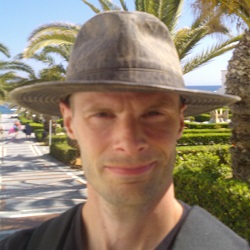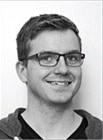3DV 2018 tutorial
Methods for photographic radiometry, modeling of light transport and material appearance
September 8th, University of Verona, Strada le Grazie 15, Verona

Abstract
The topics to be covered in this tutorial are related to analysis of visual interactions between light, material, and 3D shape. From capturing and modeling the material appearance, to the influence of subsurface scattering on it and to its applications to illumination estimation, practical examples on photometric stereo and scattering corrections over the surface geometry from structured light 3D scans.
The goal would be to exemplify measurement and modelling appearance of materials using BRDF models, and estimation of global illumination in an image, based on the Radiosity rendering technique. Moreover, we will focus on retrieval of shape, appearance, relighting and corrections of a surface geometry based on photometric stereo as well as single scattering combined with structured light 3D scanning techniques.
The tutorial will start from the basic principles and will build on fundamentals and latest techniques in material appearance, 3D shape and illumination acquisition and modelling in the literature. It will, therefore, be suitable for newcomers to the fields of computer vision and computer graphics, as well as practitioners who wish to be brought up to date on the state-of-the-art methodology in the field. Participants are expected to possess knowledge of basic image processing and computer graphics principles.
The goal would be to exemplify measurement and modelling appearance of materials using BRDF models, and estimation of global illumination in an image, based on the Radiosity rendering technique. Moreover, we will focus on retrieval of shape, appearance, relighting and corrections of a surface geometry based on photometric stereo as well as single scattering combined with structured light 3D scanning techniques.
The tutorial will start from the basic principles and will build on fundamentals and latest techniques in material appearance, 3D shape and illumination acquisition and modelling in the literature. It will, therefore, be suitable for newcomers to the fields of computer vision and computer graphics, as well as practitioners who wish to be brought up to date on the state-of-the-art methodology in the field. Participants are expected to possess knowledge of basic image processing and computer graphics principles.
Tutorial Outline (full day):
| Time | Session |
| 09:00-09:15 | Welcome & Introduction |
| 09:15-10:15 | Talk #1: BRDF measurement |
| 10:15-10:30 | Coffee Break |
| 10:30-11:30 | Talk #2: Material appearance modeling & rendering |
| 11:30-11:45 | Coffee Break |
| 11:45-12:45 | Talk #3: Radiosity & advanced global illumination |
| 12:45-13:45 | Lunch |
| 13:45-14:45 | Talk #4: Shape, appearance and relighting from multi-Light image collections |
| 14:45-15:30 | Coffee Break |
| 15:30-16:30 | Talk #5: Scattering corrections in structured light 3D scanning of surface geometry |
| 16:30-16:45 | Discussion & Conclusion |
Tutorial Topic & Summary
The topics to be covered are all related to analysis
of visual interactions between light, material, and 3D shape:
Talk #1 - capturing and modeling of material appearance - methods of
BRDF, SVBRDF, BTF data acquisition and challenges through the measurement
process and its validation (e.g., highly specular, anisotropic materials),
Talk #2 - influence of subsurface scattering on material appearance - methods
for acquiring the scattering properties of materials, and use of these properties
in path tracing and BSSRDF models for appearance analysis,
Talk #3 - applications to illumination estimation - applying a camera-aided
radiosity for illumination estimation in real indoor environments,
Talk #4 - practical examples on photometric stereo - multi light image collections
calibration and processing for visualization and surface analysis.
Talk #5 - scattering corrections over the surface geometry from structured light 3D scans - model and methods relating subsurface scattering in materials
and the surface reconstruction in a structured light scanner.
The purpose of this tutorial is to exemplify measurement and modelling appearance of materials using BRDF models, and estimation of global illumination in an image based on the Radiosity rendering technique. Moreover, we will focus on retrieval of shape, appearance, relighting and corrections of a surface geometry based on photometetric stereo as well as single scattering combined with structured light 3D scanning techniques.
The tutorial will start from the basic principles and will build on the fundamentals introduced to discuss the latest techniques in material appearance, 3D shape and illumination acquisition and modelling in the literature. It will, therefore, be suitable for newcomers to the fields of computer vision and computer graphics, as well as practitioners who wish to be brought up to date on the state-of-the-art methodology in the field. Participants are expected to possess knowledge of basic image processing and computer graphics principles.
The purpose of this tutorial is to exemplify measurement and modelling appearance of materials using BRDF models, and estimation of global illumination in an image based on the Radiosity rendering technique. Moreover, we will focus on retrieval of shape, appearance, relighting and corrections of a surface geometry based on photometetric stereo as well as single scattering combined with structured light 3D scanning techniques.
The tutorial will start from the basic principles and will build on the fundamentals introduced to discuss the latest techniques in material appearance, 3D shape and illumination acquisition and modelling in the literature. It will, therefore, be suitable for newcomers to the fields of computer vision and computer graphics, as well as practitioners who wish to be brought up to date on the state-of-the-art methodology in the field. Participants are expected to possess knowledge of basic image processing and computer graphics principles.
Tutorial Organizers & Speakers
The talks will be held by international researchers with a strong background in material appearance, 3D shape and illumination capture and modeling:
Most of the organizers have been successfully involved in similar events (i.e. workshops, tutorials, courses, schools, etc.) in the past in high ranking venues [EuroIC 2018, ICCV 2017, ICPR 2012, SIGGRAPH Asia 2011, SCIA 2011, CVPR 2010 ] with broad acknowledgement within the computer vision and computer graphics communities.

| Jiri Filip - (Talk #1), Institute of Information Theory and Automation (UTIA), The Czech Academy of Sciences. He focuses on measurement and analysis of material appearance and on development of novel measurement approaches. | |

| Jeppe Revall Frisvad - (Talk #2), Technical University of Denmark (DTU). An associate professor doing research on numerical techniques and mathematical models for realistic rendering of material appearance based on light scattering. | |

| Theodore Tsesmelis - (Talk #3), University of Verona (UNIVR), Istituto Italiano di Tecnologia (IIT), OSRAM GmbH. He is a PhD student at the University of Verona, and his research involves reconstruction and recognition of 3D scenes, the scene's material and object properties, and the estimation of lighting propagation. | |

| Andrea Giachetti - (Talk #4)), University of Verona (UNIVR). He is an Associate professor of Computer Science at the University of Verona and his research is related to various aspects of Visual Computing. | |

| Soren Kimmer Schou Gregersen - (Talk #5), Technical University of Denmark (DTU). He is a Postdoc and his research interests are optical 3D scanning using structured light and modelling interactions between light and matter. | |
Acknowledgements
This work is part of the SceneUnderLight project that has received funding from the European Union's Horizon 2020 research and innovation programme under the Marie Sklodowska-Curie Grant Agreement No. 676455.
It was also supported by the Czech Science Foundation grant GA17-18407S.